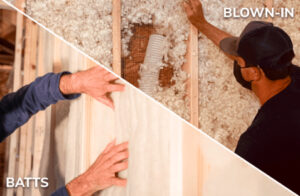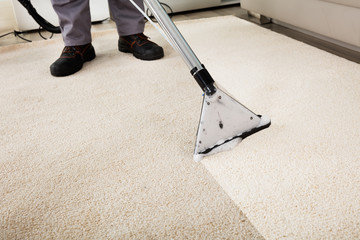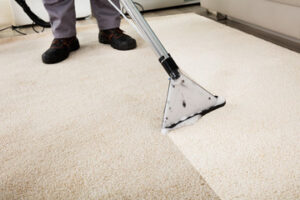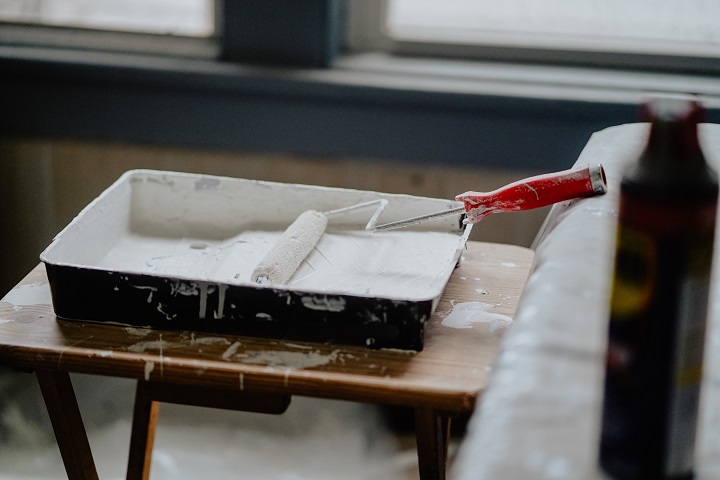Your home’s plumbing drains directly into a septic tank. Your tank holds wastewater for an extended time so that microorganisms can break down household waste.
Heavy solids settle to the bottom of your septic tank to form a layer called sludge. Lighter solids, such as fats and oils, float to the top of your tank to form a layer called scum. For more information, click the Septic Tank Armadale to proceed.
:max_bytes(150000):strip_icc()/GettyImages-1337506217-62b58dfa4a314213a7fd7bb8fb9aae79.jpg)
A septic tank is a large, underground container made of concrete, fiberglass or polyethylene that holds household waste until bacteria break it down and allow water to percolate down into the soil. The tank also treats sewage before it reaches groundwater supplies and surface water bodies. A properly sized and constructed septic tank can last forty years or more without problems.
Wastewater from toilets (called blackwater) and from showers, bathtubs, sinks, laundry machines and dishwashers flows into the septic tank. Solids sink to the bottom of the tank forming sludge, while fats, oils and grease float to the top forming scum. Bacteria inside the tank work to break down the organic waste pollutants in the wastewater. The liquid wastewater leaves the septic tank through an outlet pipe, which leads to an absorption field (or leach field) where it is biologically treated in the soil.
During the wastewater treatment process, bacteria produce gases that must be vented. The most common gas is hydrogen sulfide, which has a distinct odor like rotten eggs. A septic tank vent has a mushroom-like cap that lets the odor escape. The vent is placed near the roof of your home to prevent rainwater from entering the septic tank and interfering with the bacterial action within it.
The septic tank also has baffle walls that direct the outlet pipe from the middle of the tank into the drain field area. This keeps sludge and scum from leaving the tank and traveling into the drain field where they would clog the outlet pipe and absorption system.
A properly sized and maintained septic tank is the heart of an effective septic system. You can help ensure your septic system will last for many years to come by being careful about what you put down the toilet, washing machine and other appliances, and by scheduling regular pump-outs of the tank. A septic service professional will inspect the septic tank, measure its layers and pump out the sewage to prevent septic system backups and other costly repairs. They can also recommend other septic system maintenance steps to keep your tank and septic system working correctly.
A septic tank collects and holds wastewater, separating both heavy solid waste and lighter materials. The heavy waste sinks to the bottom of the tank, forming a layer of sludge. Lighter solids, including fats and oils, float to the top of the wastewater, where anaerobic bacteria break them down and form a liquid layer called effluent. The liquid effluent flows into a second chamber. This allows the anaerobic bacteria to continue their breakdown process until the effluent is almost pure water, without any solid matter.
After the liquid effluent leaves the septic tank, it goes through a distribution device that sends an equal amount of wastewater to pipes in the drain field or absorption area. The soil in the absorption field acts as a physical, chemical and biological filter to further purify the water before it seeps into groundwater.
The design of a septic tank depends on how many people live in the home or business and how much waste it generates each day. The tanks are usually made of concrete, reinforced plastic or fiberglass. Tanks may be rectangular or cylindrical, and the dimensions should accommodate the number of people living in the home or business and the expected volume of waste.
All septic tanks have an inlet and outlet pipe to receive and discharge wastewater. The inlet and outlet pipes must be buried underground, at least 12 inches below the surrounding soil surface. The tank itself must be watertight, to prevent surface or groundwater that does not need treatment from entering the tank and contaminating the septic system.
In a residential septic system, the tank must be large enough to handle the average daily flow of wastewater from all household plumbing fixtures. Septic tank designs for commercial systems, such as those for restaurants, motels and public laundry facilities, require special calculations to determine the tank size.
A common type of septic system includes a septic tank and a gravel/stone drainfield. A septic tank is piped to a shallow underground trench of clean stone or gravel, covered with a geofabric that keeps sand and other contaminants from reaching the effluent. A septic tank must be far away from buildings, playgrounds, gardens, storage sheds and other paved areas that could interfere with the operation of the drain field or soil-based treatment system.
When you’re ready to install a septic tank on your property, a professional should be on hand to help you make the best choice based on soil type, landscaping, structural risks, property size, and more. Septic tanks are a complex system that requires digging, installing pipes, and placing a control panel. It’s important to find a licensed and insured contractor to avoid expensive mistakes or failures that could damage your home or create a health hazard for your family.
The septic tank is a large, underground container made of concrete, fiberglass, or polyethylene that holds wastewater. Its design allows solid waste to settle or float, with heavier solids (including grease and fat) sinking to the bottom to form sludge, while lighter, less dense liquids (including water and urine) rise to the top as scum. A septic tank also has compartments and a T-shaped outlet that prevent sludge and scum from leaving the tank and traveling into your drain field.
As bacteria break down contaminates in the septic tank, they generate gases such as hydrogen sulfide. These are released through a vent that can have a mushroom shape or be fitted with a charcoal filter to reduce odors. Regular maintenance and inspections of your septic tank will ensure that a strong odor isn’t generated or that ground movements aren’t damaging your system.
Once the septic tank has properly processed and treated your wastewater, it’s ready to be discharged into an absorption field. This is a series of pipes placed in gravel trenches on your property. The septic tank’s wastewater flows through the pipes and into the absorption field where it is further treated by percolation into the soil and grass above.
When planning your septic system, it’s crucial to map out where all the components are so that you don’t damage them when doing yard work or building structures on your property. You should also avoid parking heavy vehicles or equipment over septic system components as this can cause structural damage. Finally, don’t plant or build structures, such as swimming pools or patios, that would cover your septic tank, distribution box, or absorption field.
All water that exits your home through toilets, showers, bathtubs, sinks, and appliances runs into the septic tank. Wastewater contains solid materials that sink to the bottom of the tank forming sludge and fats, oils, and greases that float to the top of the tank forming scum. Anaerobic bacteria in the septic tank digest these organic wastewater pollutants. Liquid wastewater (effluent) leaves the tank through a perforated pipe into your septic drain field.
The septic system must be sized appropriately to handle your household’s wastewater flow. Discharging more water into the system than it is designed to handle can flood your drainfield and clog toilets, tubs, and sinks.
If you are unsure of the size of your septic system, contact a plumber for a professional assessment. The best way to avoid clogs and overflow is to have your septic tank pumped on a regular basis. Most tanks should be pumped every three to five years. When it is time to have your tank pumped, ask the service professional for a record of the inspection including the height of the sludge and scum layers. A bacterial additive can also be added to your tank which aids in breaking down the sludge and reducing odors.
To protect your septic system, keep children and pets away from the tank and drainfield areas. Never park a vehicle or place any heavy objects over the drainfield area. This can cause soil movement and damage your septic tank, septic pump, and drainfield. Keep the area around your septic tank covered with grass and keep it free from paving, storage buildings, and playground structures.
The septic system’s drainfield is the final part of your septic system and is important to the health of your family. When the drainfield becomes clogged with solids or contaminated by chemicals, it can cause health issues including diarrhea, typhoid fever, hepatitis, and dysentery. In addition, if infants are exposed to nitrates and phosphates through drinking water, they can suffer from blue baby syndrome, a condition that limits their ability to absorb oxygen. To protect the drainfield, divert surface water and downspouts away from it.






 Blown-in Insulation involves using loose-fill insulation material, often cellulose or fiberglass, that’s blown into a home’s walls and attic spaces. It is a simple and effective method of enhancing a home’s energy efficiency according to this website at
Blown-in Insulation involves using loose-fill insulation material, often cellulose or fiberglass, that’s blown into a home’s walls and attic spaces. It is a simple and effective method of enhancing a home’s energy efficiency according to this website at 

